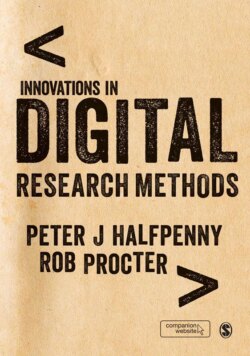Читать книгу Innovations in Digital Research Methods - Группа авторов - Страница 32
На сайте Литреса книга снята с продажи.
1.4.4 Scholarly Communications
ОглавлениеNowhere is this tension between top-down and bottom-up innovation processes in science more clearly evident than in scholarly communications. The past decade has seen the emergence of new ideas about the practice of scholarly communications, with talk of a ‘crisis in publishing’ and weaknesses in the peer-review system. One outcome is the notion of ‘Open Science’ (Neylon and Wu, 2009) with its advocacy of more open scientific knowledge production and publishing processes (Berlin Declaration, 2003; Murray-Rust, 2008). This has been inspired by discourses developed in ‘Free/Open Source Software’ and ‘Creative Commons’ movements (Lessig, 2004; Benkler and Nissenbaum, 2006; Elliott and Scacchi, 2008). Web 2.0 is widely seen as providing the technical platform to enable these new forms of scholarly communications and bring about a ‘re-evolution’ of science (Waldrop, 2008).
Web 2.0 brings the promise of enabling researchers to create, annotate, review, reuse and represent information in new ways, promoting innovations in scholarly communication practices – e.g. publishing ‘work in progress’ and openly sharing research resources – that will help realize the e-Research vision of improved productivity and reduced ‘time to discovery’ (Arms and Larsen 2007; Hey et al., 2009; Hannay, 2009; De Roure et al., 2010). However, despite this increasing interest in Web 2.0 as a platform and enabler for e-Research, understanding of the factors influencing adoption, how it is being used, and its implications for research practices and policy remains limited. Recent studies suggest that there is considerable reluctance – even suspicion – to adopt new forms of scholarly communications among many academics, who fear that this will mean the end of the ‘gold standard’ of peer-review and the undermining public trust in science (Procter et al., 2010a; Procter et al., 2010b). Equally, it would be a mistake to ignore the capacity of established academic publishers to shape the emerging scholarly communications landscape so as to preserve their role as gatekeepers (Stewart et al., 2012). The future of scholarly communications may, after all, not be so radically different from its recent past.
